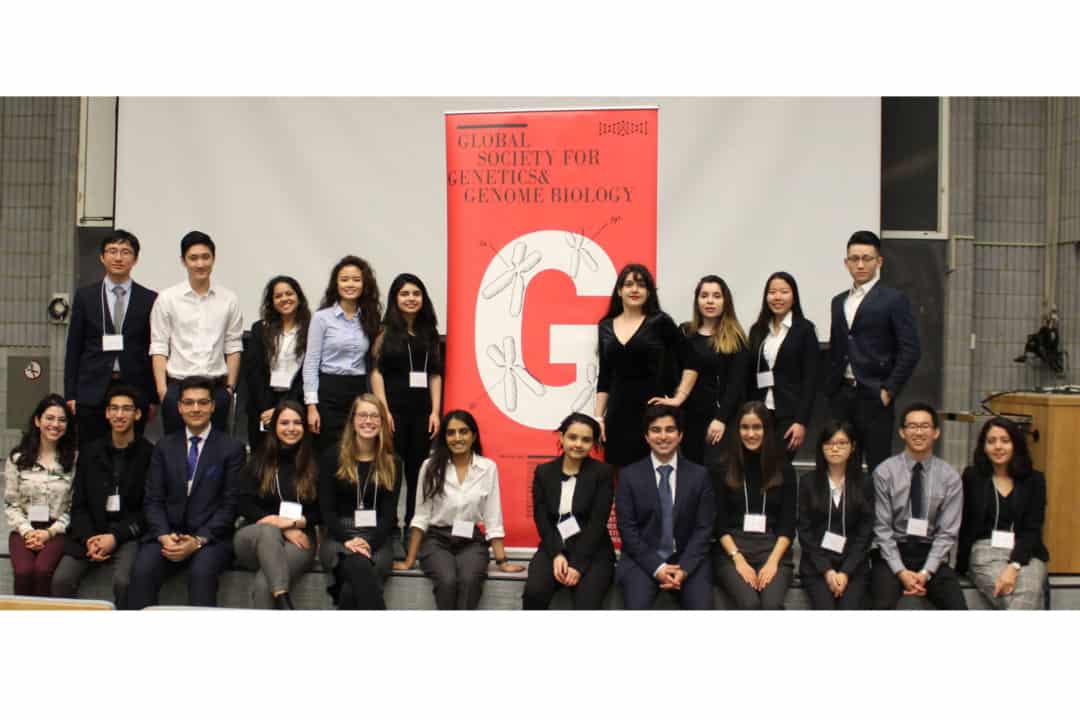As second semester rolls in and spring approaches, many first-year life sciences students are starting to consider which program of study they will pursue next year. This is often a time of stress and confusion for students who may not know exactly what they want to study, or even how to start their search.
Fortunately, some University of Toronto student groups are offering their time and wisdom to help first years navigate the multiple programs offered in the life sciences.
The Global Society for Genetics and Genome Biology (GSGGB) hosted a “How to choose a life science [program of study]” event at New College on January 13. Members of the GSGGB offered their guidance and support to keen first-year students — representing the programs of molecular genetics and microbiology, fundamental genetics, bioinformatics and computational biology, ecology and evolutionary biology (EEB), and more.
Students had the opportunity to discuss programs, enrollment requirements, and even research opportunities with the upper-year students, who were eager to share their experiences in their respective programs.
What’s the difference between type 1, 2, and 3 programs?
The Faculty of Arts & Science offers 21 specialist programs, 20 majors, and six minors in the life sciences. Most specialist programs, alongside some majors, such as molecular genetics and microbiology, are known for their competitiveness. These are type 3 programs, which have limited spots available, require minimum grades in certain prerequisite first-year courses, and supplemental information — such as a personal statement or audition.
Type 2 programs also require minimum grades in prerequisite courses, but typically have more available spots and lower grade requirements. The neuroscience major is an example one popular type 2 program.
However, many students don’t realize that a lot of life science majors and minors are type 1 programs, which do not require any specific courses or grades for enrollment. Common type 1 majors include as global health, EEB, and fundamental genetics, in addition to some lesser-known majors such as animal physiology, or environment and health. As long as a student is on course to obtaining four full-course equivalents by the end of this school year, they will be admitted to any type 1 program.
Where can students learn more about programs of study?
To learn more about programs of study, first-year students are encouraged to visit the program toolkit section of Sidney Smith Commons’ website. There, they will find a comprehensive list of all programs offered by the Faculty of Arts & Science, how to apply to each, and important dates. This year, enrollment begins on March 1.
Students should also consider meeting with their college’s academic advisors, who can provide guidance regarding program enrollment and degree planning.
Student groups like the GSGGB are also a useful resource for first-year students, who may at times be daunted by the prospect of approaching professors or older students for advice.
Events like “How to choose a life science [program of study]” provide students with the opportunity to chat in a casual, stress-free environment, while receiving advice from people who were once in their same position.
GSGGB Affairs Leader Aisha Faruqui wrote to The Varsity that “there are plenty of life sci clubs like GSGGB that would love to help out” puzzled first-year students, and that students should feel free to reach out.
“We’ve all had moments in undergrad where we have felt lost or uncertain about our future,” she noted, so students should never feel alone in their experiences.
U of T offers its students plenty of resources when it comes to academic planning and discovery. Students will have many opportunities to explore interesting fields in the life sciences and to shape their career paths.
Faruqui reflected, “Don’t stress out about choosing your program, and don’t worry about not getting into your desired program after first year!”
You can make it work out in the end.


